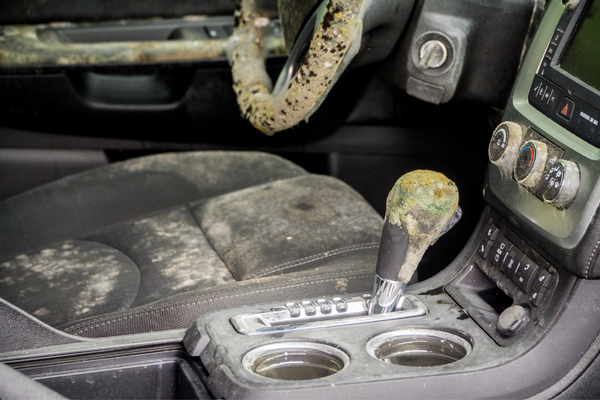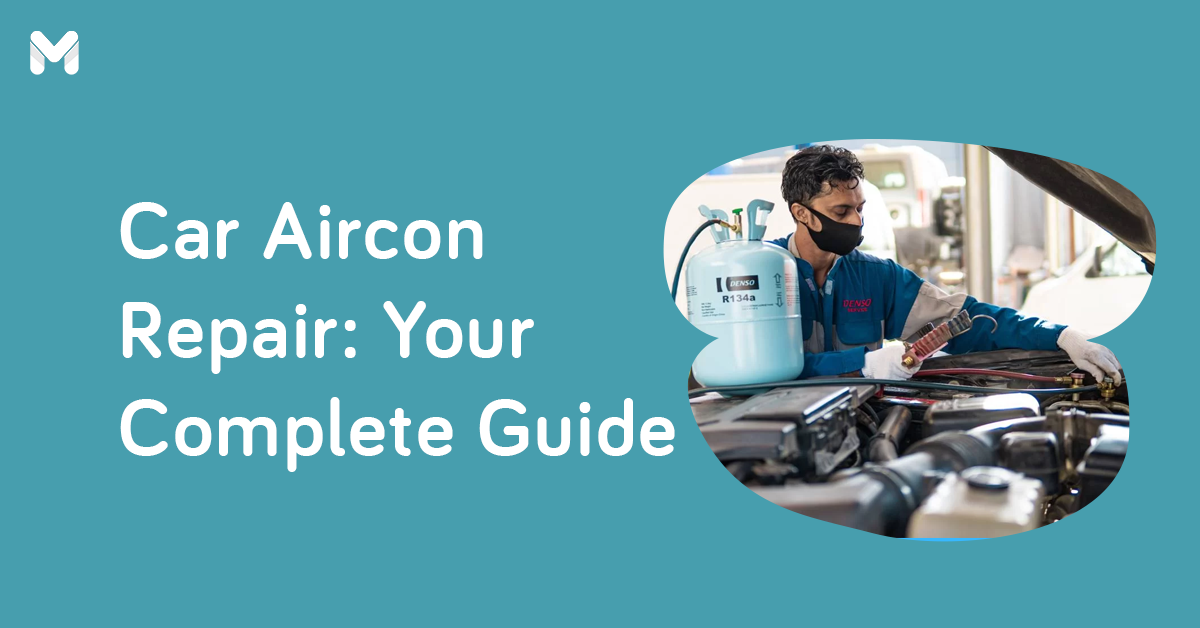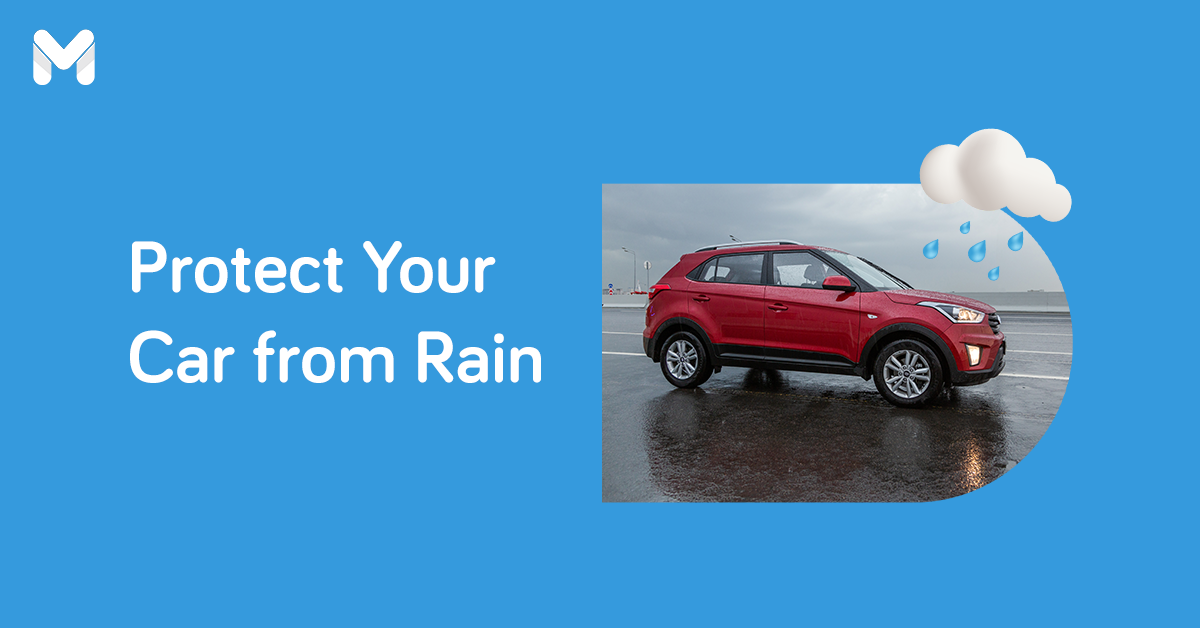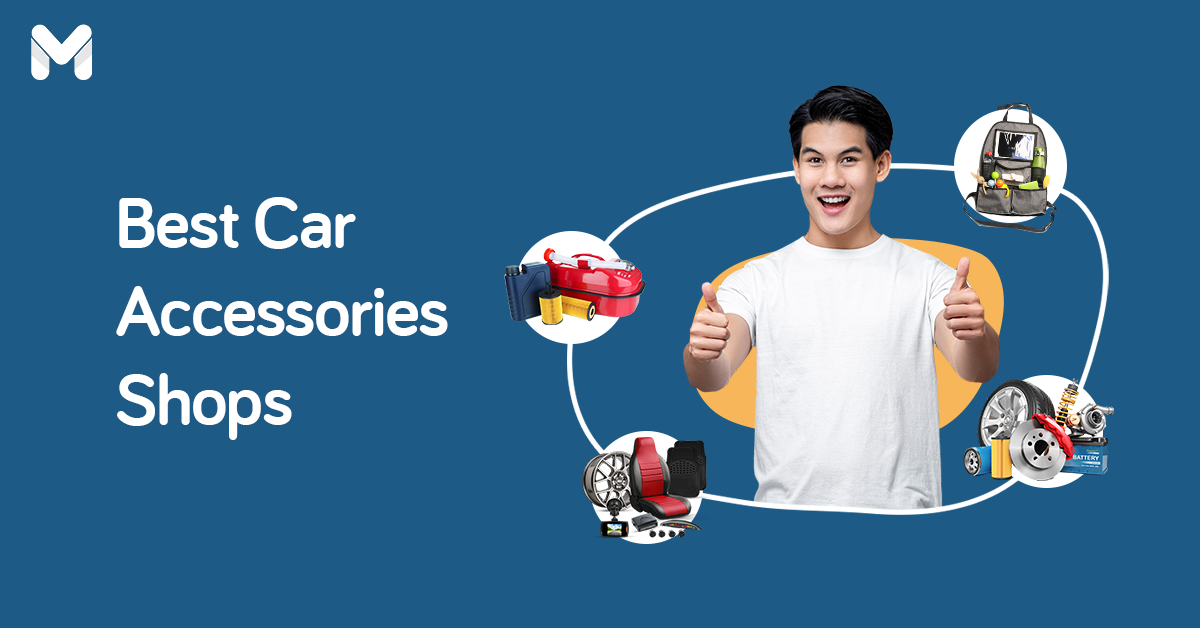The rainy season is here again. Along with it comes one of the car owner's worst enemies: flooding. With flash floods that immediately follow heavy rainfall, even pick-ups and SUVs are not spared from flooded car problems.
Be prepared for any disaster like flooding. If you live in one of the flood-prone areas in the Philippines, it’s best to move and park your vehicle on higher ground. However, there’s still a chance that floodwater may get inside your vehicle.
Keep on reading to know the common problems with flooded cars and what to do when your car is flooded.
8 Common Problems with Flooded Cars: What Will Happen If a Car is Flooded?
Whether you're reviving a flooded car or buying a used one, here are the tell-tale signs of flooded vehicle problems you must be aware of.
⚠️ Malfunctions in the Electronics and Electrical System

The electronics and electrical parts always sustain the most serious car damage due to flooding. Moisture can cause a short circuit in the electrical system, resulting in malfunction of its critical components, including the following:
- Electrical control unit (ECU)
- Headlights, brake lights, turn signals, and other automotive lights
- Air conditioning system
- Power windows, power locks, and power seats
- Audio and video systems
- Fuses
- Anti-lock brake system
Before turning these electrical parts on for inspection, make sure that the engine is safe to start. All the plugs, switches, and relays must be dried out.
If you notice anything wrong with how a certain component works, that's a clear sign of electrical trouble. Also, if the ECU got soaked, have your flooded car checked immediately for electrical issues at the repair shop.
⚠️ Mechanical Damage to the Engine
The engine is another critical part of your car that needs utmost attention after flooding. When floodwater reaches engine parts like the air intake and cylinders, the piston will try to compress it. Since water doesn't compress, it can break the piston rods and lead to engine stalling.
How do you know if water has entered your engine? To find it out, check the oil dipstick for water droplets and oil that looks milky. Watch the video below for how to check the symptoms of a water-flooded engine.
⚠️ Contaminated Fluids
Water in the transmission, brake fluid, power steering, and coolant reservoirs can spell trouble for your car's performance. These parts will get damaged due to corrosion and lack of lubrication. For instance, when floodwater is mixed with fuel, fuel injectors, spark plugs, and the engine will be seriously damaged.
So check your car's fluids in the fuel filter and tank, as well as the power steering, coolant, clutch, and brake fluid reservoirs for floodwater contamination.
⚠️ Mold and Mildew in the Interior

Apart from causing engine-related problems, floodwaters can also turn your car into a breeding ground for mold and mildew.
A strong musty odor means mold is present in a car. It's one of the common problems with flooded cars that require some effort to fix.
Remove and check these parts in your flooded car:
- Seats
- Carpets and floor mats
- Headliner
- A/C system
- Door panels
- Trunk
⚠️ Mud and Debris in Hard-to-Clean Areas
Floodwaters bring mud and debris, and these things may get trapped in certain parts of the car. They may be hidden under the hood, in the undercarriage, or even within the brakes. If they’re not addressed, they may cause serious damage to your car.
⚠️ Corroded Car Parts

Rust takes months or years to form on the various parts of a flooded car. One of the most common problems with flooded cars, it can weaken your car's structure and affect functions like braking and shifting gears. At the first signs of rusting after your car has been flooded, work immediately to remove rust from your vehicle[1] before it spreads out.
Inspect these rust-prone areas in your car:
- Frame
- Screws and bolts
- Engine parts
- Muffler
- Fuel tank
- Clutch
- Brake pads
- Fenders
- Trunk
- Chassis
- Wheel wells
⚠️ Slippery Brakes
After being immersed in floodwater, brakes tend to lose grip because of the loss of contact between the brake pads and the wet brake rotors. Step on the brake pedal repeatedly before you drive on. If it feels slippery, have a mechanic inspect your car brakes.
⚠️ Water Stains
Floods can give your car interior some cosmetic issues. Since they’re dirty, they can stain the upholstery, door panels, seatbelts, and more. These marks may not appear right away, but give it time, and they will surface. Some are not even visible because they’re hidden by the shade of the material.
Read more:
- Road Safety Tips to Remember When Driving This Rainy Season
- Typhoon Emergency Kit Items You Shouldn’t Forget for the Rainy Months
What to Do If Your Car Gets Flooded After Heavy Rain

Floodwater causes a lot of car problems that show up long after the vehicle has been submerged. It can ruin a vehicle's electrical systems, mechanical systems, and lubricants.
A flooded car is costly to repair, so never risk it—avoid passing through a flooded area. Wait for the floodwater to subside before driving on.
But sometimes, cars still get flooded while they're stuck in traffic or parked in flood-prone areas. When that happens to your ride, inspect it afterward to spot any car damage due to flooding and make it roadworthy again.
Here are some tips on what to do if a car gets flooded.
✔️ Don't Start Your Car
If you have a flooded car, the last thing you want to do is get its engine running as this may destroy its mechanical and electrical systems. Also, don't forget to disconnect the battery to protect you from electric shock.
✔️ Determine the Extent of Water Damage
You can easily do this by looking for the highest water mark around your car. You can easily see this in the interior. If the water mark is above the dashboard, that means all the electrical parts under the dash have been submerged in water.
Things are likely manageable and repairable if the water mark is just at the floor level. However, you still need a mechanic to verify it.
✔️ Check the Engine Oil and Fuel System

Get a stick long enough for you to check the level of the oil. If there are water droplets on the stick, it means there’s water inside the engine. When this happens, do not start your car—oil and water will mix if you do. Look into the fuel system and drain off some gas from your flooded car. If there is water in the gas, flush your fuel system.
✔️ Check Your Electrical System
The most you can do to check your vehicle's electrical system is to see if their placements are below or over the flood level. If below, you need to replace the system. Also check if water seeps through your flooded car’s coolant reservoirs, brake, clutch, and power steering.
✔️ See if There are Debris and Trash Trapped Around and Inside the Car
Other than checking the engine and electrical system of your car, look for debris or trash that might have been trapped under the engine and within the wheels. Don’t forget the brakes, the gaps under the hood, and the panels in the trunk. Some of the trash you may find include plastic, tree branches, leaves, stones, and even hardened mud.
✔️ Contact Your Insurance Company
Once your car has been flooded, it would be wise to call your insurer and inform them of your issue. They may even provide some support prior to the repair itself (in case your claim is approved).
While you’re at it, take pictures of your flooded car, emphasizing the damage. To cover everything, you may also take videos of the car and its affected parts.

✔️ Seek Help from a Qualified Mechanic
If your car was severely damaged by a flood, call a mechanic to further inspect the damage. Checking and repairing your flooded car on your own may lead to bigger issues. Leave it to the pros; they know what they’re doing.
Since you can’t drive your car to the mechanic, you can have it towed. Check with your insurer if it’s covered, including the actual repair. The insurer may also recommend a qualified service center that will deal with your flooded car.
✔️ Start Drying the Interior
Floods usually come with mud and trash, thus getting your car interior dirty. If the moisture is trapped within the car, molds and mildew will grow, giving off unpleasant smells; they may even cause serious health problems. Also, the water will likely seep into your car’s electrical parts, leading to more damage.
After turning off the car, remove excess water to prevent further damage. You can do this manually by using towels, but you can also use a wet or dry vacuum cleaner. Open all the doors and windows to allow fresh air to circulate within the interior. If possible, use electric fans to increase the air flow and speed up the drying process.
✔️ Consider Trading Your Vehicle
A car's value depreciates by 10% per year. If your flooded car has been repaired, its value will go down to about 20% per year, depending on the extent of the damage.
Auto dealers in the Philippines usually have a trade-in program that allows people to sell their flooded cars, which the dealers will then restore and resell as pre-owned cars.
How to Protect Your Car From Floods
Prevention is always better than cure–even when it comes to cars! If you’re anticipating a storm or flash floods, you have to carry out measures to protect your car. Check out the following:
👍 Assess and Anticipate the Situation
When there’s a typhoon alert[3] and you live in a flood-prone area, it’s wise to be on guard, as flash floods can happen without warning. Don’t wait for things to get worse, so consider evacuating your car and more importantly, your family.
👍 Take Your Car to Somewhere Safe
If possible, take your car to a higher elevation. It could be that road up your street that the floodwaters won’t reach or a parking building within the city. If possible, leave your car at a friend’s or relative’s home in case they live in a much safer location.
This is an important precautionary measure, as there’ll be simply no way to remove your car from high floodwaters in case it gets trapped there.
👍 Use the Right Accessories for Your Car
Sometimes, you have no choice but to drive your car through the flood (as long as your car’s wading depth permits it). Protect your car by giving it the right accessories.
For instance, SUV owners can install a snorkel. This will help the car to breathe even if a large part of it is underwater. You can also go for bigger tires and rims. These enhancements add height to your car, which comes in handy when navigating flooded roads.
👍 Keep Your Car’s Speed Down
Driving slowly and surely is the key to protecting your car when traversing a flooded road. When you step on the gas and drive fast, you’re at risk of aquaplaning. Aquaplaning is a situation where a layer of water gets between your car’s wheels and the road surface.
As a result, your car may become unresponsive to your steering. This will cause your car to skid and hit other cars and even pedestrians.
👍 Rev Your Engine
Revving your car will protect the engine from getting damaged. It keeps the water from getting into the exhaust. In case you’re driving a manual car, slip the clutch to manage the engine output while making sure that you won’t go too fast over the flooded road. This will also keep your car from stalling.
👍 Take a Different Route
Once you find that your usual road is flooded, it’s time to take a different route. Better yet, check the roads (via traffic news and social media) before leaving home so you can plan your journey accordingly. While it may unnecessarily extend your trip, your car and your loved ones are assured safety.
👍 Get Comprehensive Car Insurance
A comprehensive car insurance policy may be an additional expense, but the protection it offers is priceless. Get an Acts of Nature or Acts of God coverage to protect your car from floods and other natural disasters.
Talk to your insurance provider to know what kinds of repairs are included in your vehicle insurance plan. Does it include the replacement of fluids and electrical parts or cleaning of the interiors?
Final Thoughts
The Philippines is battered by typhoons every year. These disasters usually bring in floodwaters that can damage your car. Knowing that, it’s important you know what to do in case your car gets affected. Better yet, you should take precautionary measures to protect your car, your wallet, and most importantly, your family.
Compare Car Insurance Providers in the Philippines
Considering switching to another car insurance company? We've made the legwork a lot easier for you. Here are the top providers in the Philippines and the coverage they offer.
| Car Insurance Company | Maximum Total Sum Insured | CTPL Coverage | Own Damage & Theft Coverage | Acts of Nature Coverage | Death / Disablement Coverage |
|
FPG Insurance
|
₱4 million
|
✔️
|
✔️
|
✔️
|
|
|
Malayan Insurance
|
₱7.5 million
|
✔️
|
✔️
|
✔️
|
|
|
The Mercantile Insurance Corporation
|
₱5 million
|
✔️
|
✔️
|
||
|
OONA Insurance (formerly MAPFRE)
 |
₱5 million
|
✔️
|
✔️
|
✔️
|
✔️
|
|
PGA Insurance
 |
₱3 million
|
✔️
|
|||
|
SGI Philippines
|
₱5 million
|
✔️
|
✔️
|
✔️
|
|
|
Standard Insurance
|
₱5 million
|
✔️
|
✔️
|
✔️
|
✔️
|
|
Stronghold Insurance
|
₱3 million
|
✔️
|
Source: [1] How to Prevent and Remove Rust on Your Car Like a Pro (Wojdyla and Schrader, Popular Mechanics, 2020)










